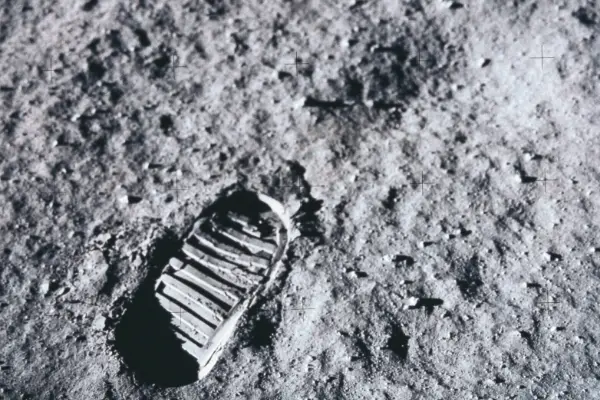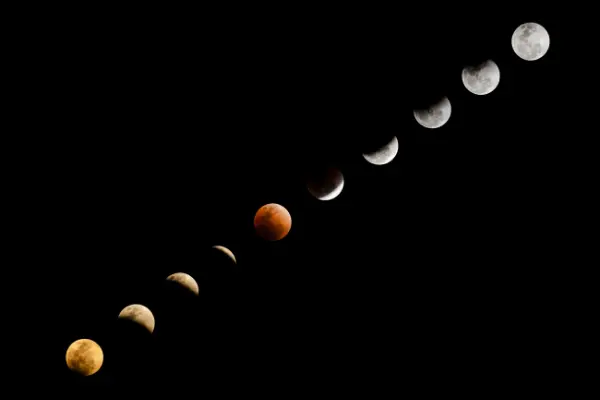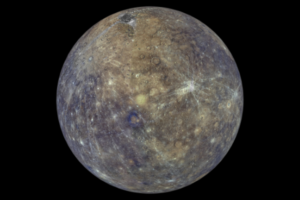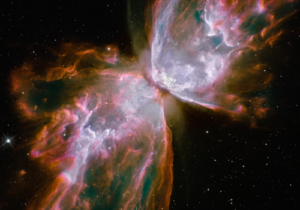All About The Moon – Everything You Want To Know About The Luna
The moon is the easiest celestial object to find in the night sky — when it’s there. Earth’s only natural satellite hovers above us bright and round until it seemingly disappears for a few nights.
The brightest and largest object in our night sky, the Moon makes Earth a more livable planet by moderating our home planet’s wobble on its axis, leading to a relatively stable climate. It also causes tides, creating a rhythm that has guided humans for thousands of years.
Earth’s only natural satellite is simply called “the Moon” because people didn’t know other moons existed until Galileo Galilei discovered four moons orbiting Jupiter in 1610.
Key Takeaways:
- The Moon is the only natural satellite of Earth, and it was created 4.6 billion years ago.
- The Moon reflects light coming from the Sun.
- The moon has a diameter of about 2,159 miles, and it is bigger than Pluto.
- The distance between the Earth and its moon averages about 238,900 miles.
- The surface gravity of the moon is only one-sixth that of the Earth.
- The Moon was first visited by the Soviet spacecraft Luna 2 in 1959.

How did the Moon form?
The Moon, otherwise known as Luna, is the only natural satellite of Earth. It was created 4.6 billion years ago, and it is widely accepted that it was created when Earth collided with a planet-sized object called Theia.
According to the “giant impact” theory, the young Earth had no moon. At some point in Earth’s early history, a rogue planet, larger than Mars, struck the Earth in a great, glancing blow. Instantly, most of the rogue body and a sizable chunk of Earth were vaporized.
The cloud rose to above 13,700 miles (22,000 kilometers) altitude, where it condensed into innumerable solid particles that orbited the Earth as they aggregated into ever larger moonlets, which eventually combined to form the moon.
What makes the Moon glow?
The Moon does not shine with its own light. It simply reflects light coming from the Sun.
Hmmmm.. How big is it?

Though a satellite of Earth, the moon, with a diameter of about 2,159 miles (3,475 kilometers), is bigger than Pluto. (Four other moons in our solar system are even bigger.)
The moon is a bit more than one-fourth (27 percent) the size of Earth, a much smaller ratio (1:4) than any other planets and their moons.
This means the moon has a great effect on the planet and very possibly is what makes life on Earth possible.
Due to its size and composition, the Moon is sometimes classified as a terrestrial “planet” along with Mercury, Venus, Earth and Mars.
Related
How far is the Moon from the Earth?
The distance between the Earth and its moon averages about 238,900 miles (384,000 kilometers). The diameter of the moon is 2,160 miles (3,476 kilometers). The moon’s mass—the amount of material that makes up the moon—is about one-eightieth of the Earth’s mass.
What about its gravity?
The surface gravity of the moon is only one-sixth that of the Earth. The force gravity exerts on a person determines the person’s weight. Even though your mass would be the same on Earth and the moon, if you weigh 132 pounds (60 kilograms) on Earth, you would weigh about 22 pounds (10 kilograms) on the moon.
There are two bulges in the Earth due to the gravitational pull that the Moon exerts; one on the side facing the Moon, and the other on the opposite side that faces away from the Moon,
The bulges move around the oceans as the Earth rotates, causing high and low tides around the globe.
When did the humans land on the Moon?

The Moon was first visited by the Soviet spacecraft Luna 2 in 1959. It is the only extraterrestrial body to have been visited by humans. The first landing was on July 20, 1969, the last was in December 1972.
The Moon is also the only body from which samples have been returned to Earth.
Apollo astronauts brought back a total of 842 pounds (382 kilograms) of lunar rocks and soil to Earth. We are still studying them.
In the summer of 1994, the Moon was very extensively mapped by the little spacecraft Clementine and again in 1999 by Lunar Prospector.
Is there really a “Dark Side” to the moon?

No, in reality both sides of the Moon see the same amount of sunlight however only one face of the Moon is ever seen from Earth. This is because the Moon rotates around on its own axis in exactly the same time it takes to orbit the Earth, meaning the same side is always facing the Earth.
The side facing away from Earth has only been seen by the human eye from spacecraft.
Why does it look like the Moon is changing shape?

The shape of the moon appears to change in a repeating cycle when viewed from the Earth because the amount of illuminated moon we see varies, depending on the moon’s position in relation to the Earth and the sun.
We see the full moon when the sun is directly behind us, illuminating a full hemisphere of the moon when it is directly in front of us.
The new moon, when the moon is darkened, occurs when the moon is almost directly between Earth and the sun—the sun’s light illuminates only the far side of the moon (the side we can’t see from Earth).
How is the surface of the moon?

The moon is rocky. It’s pockmarked with craters formed by asteroid impacts millions of years ago. Because there is no weather, the craters have not eroded.
There are two primary types of terrain on the Moon: the heavily cratered and very old highlands and the relatively smooth and younger maria.
The maria (which comprise about 16% of the Moon’s surface) are huge impact craters that were later flooded by molten lava.
Most of the surface is covered with regolith, a mixture of fine dust and rocky debris produced by meteor impacts. For some unknown reason, the maria are concentrated on the near side.
There is no continental drift on the moon. Everywhere, the moon is sheathed by rocky rubble created by constant bombardment by meteoroids, asteroids, and comets.
Most rocks on the surface of the Moon seem to be between 4.6 and 3 billion years old. This is a fortuitous match with the oldest terrestrial rocks which are rarely more than 3 billion years old. Thus the Moon provides evidence about the early history of the Solar System not available on the Earth.
How is the Moon’s atmosphere?
The moon has a very thin atmosphere, so a layer of dust — or a footprint — can sit undisturbed for centuries. And without much of an atmosphere, heat is not held near the surface, so temperatures vary wildly.
The airless lunar surface bakes in the sun at up to 243 degrees Fahrenheit (117 degrees Celsius) for two weeks at a time (the lunar day lasts about a month). Then, for an equal period, the same spot is in the dark. The dark side cools to about -272 degrees Fahrenheit (-169 degrees Celsius).
What is a Lunar eclipse?

During a lunar eclipse, Earth comes between the Sun and the Moon, blocking the sunlight falling on the Moon. There are two kinds of lunar eclipses:
- A total lunar eclipse occurs when the Moon and Sun are on opposite sides of Earth.
- A partial lunar eclipse happens when only part of Earth’s shadow covers the Moon.
During some stages of a lunar eclipse, the Moon can appear reddish.
This is because the only remaining sunlight reaching the Moon at that point is from around the edges of the Earth, as seen from the Moon’s surface. From there, an observer during an eclipse would see all Earth’s sunrises and sunsets at once.
Conclusion
There are still many questions left to answer about the Moon. And the most exciting days of lunar activity may still lie ahead as NASA sends humans on the next missions to the Moon and eventually on to Mars.
ABOUT US
We are a team of active amateur astronomers, here to help you with all your astronomy and science related needs – this is anything, from reviewing the latest telescopes to be released to talking about gravity and neurons. The Big Bang Optics was started because of our love for astronomy and to help others like us find the best telescope and accessories.
LEGAL DISCLAIMER
The Big Bang Optics is a participant in the Amazon Services LLC Associates Program, an affiliate advertising program designed to provide a means for sites to earn advertising fees by advertising and linking to Amazon.com. The Big Bang Optics also participates in affiliate programs with Clickbank and other sites. The Big Bang Optics is compensated for referring traffic and business to these companies.




